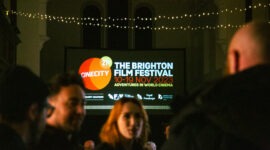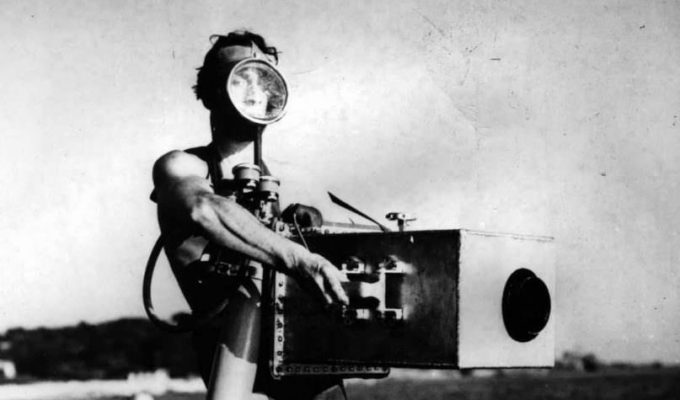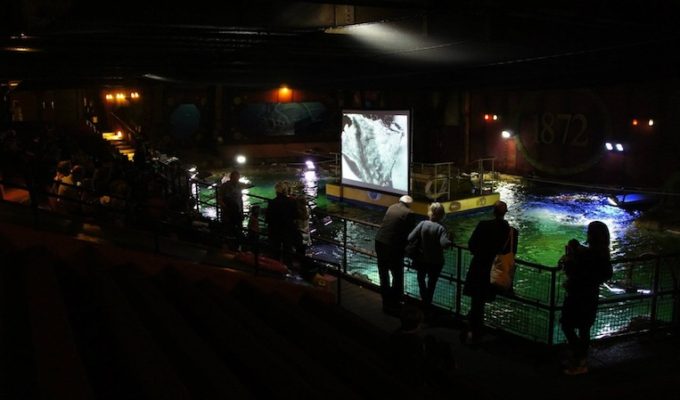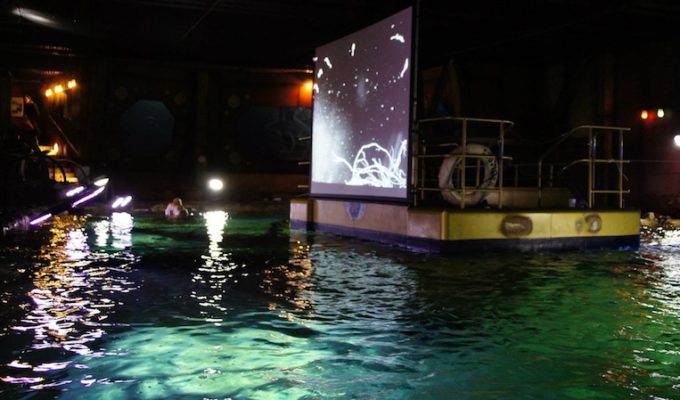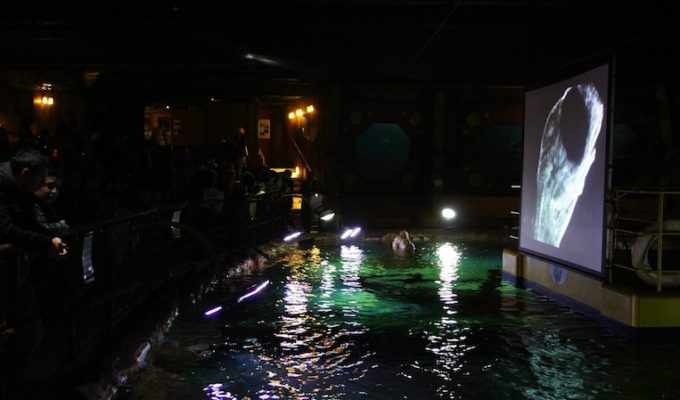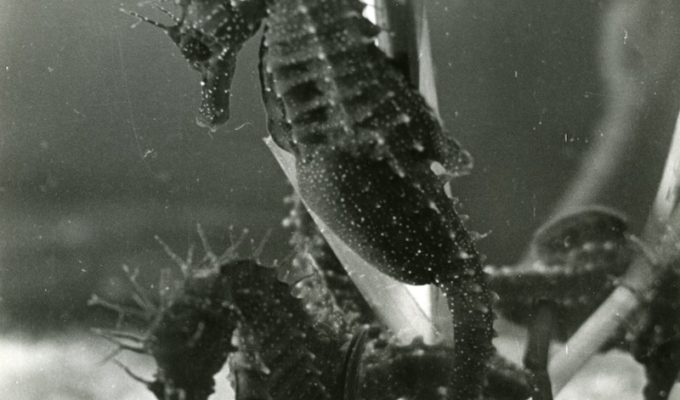Jean Painlevé / Underwater Utopias (2011)
Brighton Sealife Centre
Projected onto a floating screen in the turtle pool at Brighton Sealife Centre, CINECITY screened a selection of underwater films made by pioneering film-maker Jean Painlevé. In total, over 4000 visitors passed through Brighton Sealife Centre during the evening and experienced the films of Painlevé including perhaps his most famous film, The Seahorse, made in 1933.
Before Jacques Cousteau and David Attenborough there was Jean Painlevé, the French marine biologist and pioneering film-maker who made over 200 films with his partner, Genevieve Hamon, many exploring the weird and wonderful life of the deep. Merging science and art, they revealed the hidden poetry of nature’s underwater utopia in a series of surreal films. An instinctive anarchist and close friend of director Jean Vigo, Jean Painlevé was also drawn to surrealism and worked with Man Ray among others.
The former Brighton Aquarium played a small but intriguing role in the development of the theory of anarchism. Prince Peter Kropotkin, born in Russia, was exiled in Brighton for a time (he is named on Brighton & Hove bus number 49). A regular visitor to the Aquarium he was inspired to write Mutual Aid: A Factor of Evolution (1902) after studying the behaviour of the crabs and turtles. At the start of Underwater Utopias, CINECITY unveiled a temporary plaque in the foyer of the Sealife Centre to commemorate Kropotkin’s links with the venue.
This event took place in October 2011 as part of White Night, a city-wide, all-night celebration marking the end of British Summer Time.
